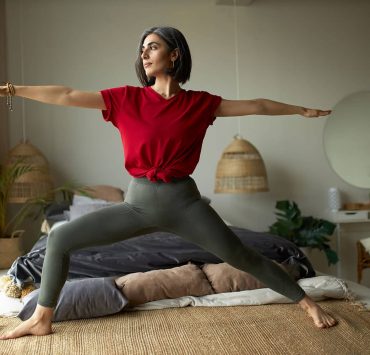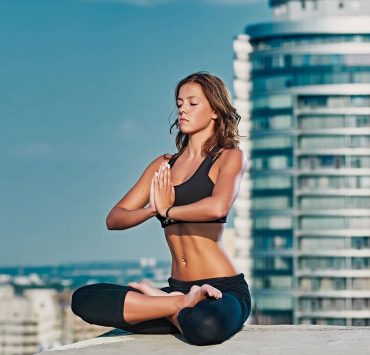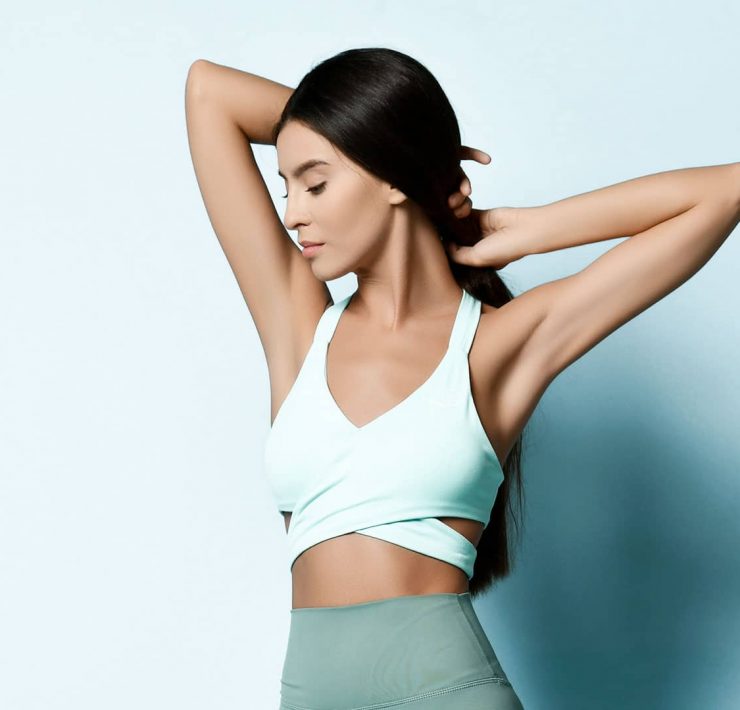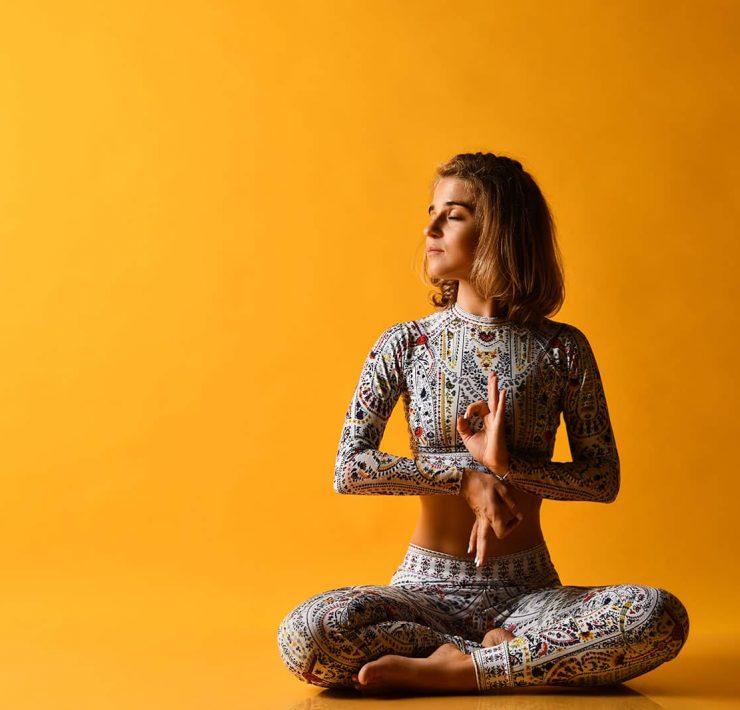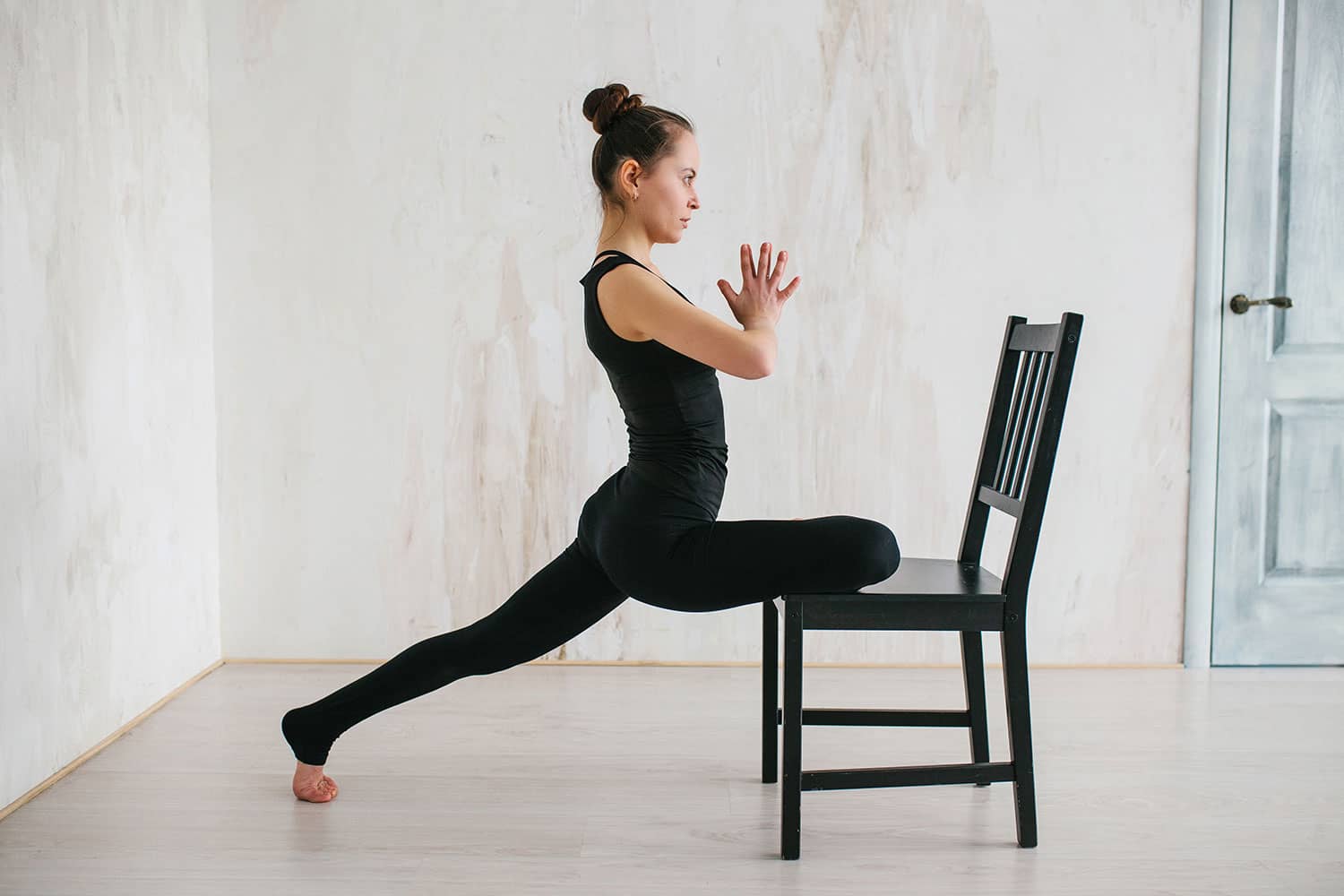
Susan views the world through a lens of spirituality, health,…
Yoga is for everybody and every kind of body. But every person has their own mobility abilities. While some may find it comfortable to sit in Sukhasana, literally Easy Seated Pose, for others, it may be excruciating to sit on the ground for any length of time.
Most modern postural yoga classes will have you practice asanas and vinyasas on a yoga mat. B.K.S. Iyengar was instrumental in introducing yoga props to help deepen poses and support people who are still in the process of building strength and flexibility.
Chair yoga is becoming popular, not only for those who start practicing yoga later in life or for those with limited mobility. It is a yoga class which is easy on the body and allows you to focus on yourself rather than worrying about balance, stability, or getting up and down from the ground frequently.
What is Chair Yoga?
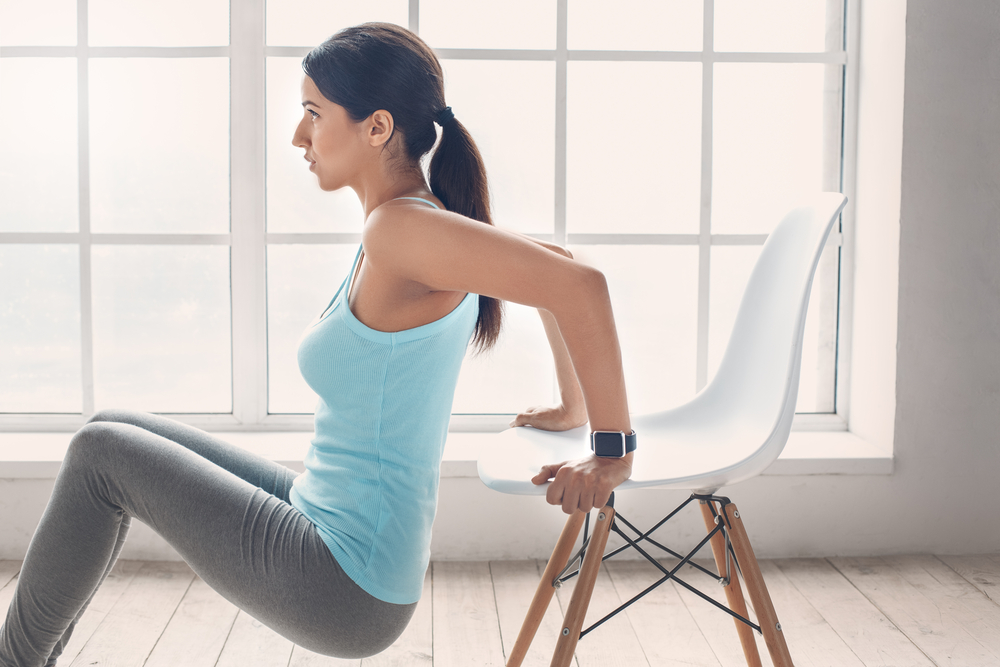
Yoga with the use of props in general, was popularized by B.K.S. Iyengar. He encouraged the use of improvised props as tools to aid students in their yoga practice. Before yoga straps or yoga blocks were invented, Iyengar was using ropes, wooden blocks, even telephone books and chairs as props during his classes.
The first therapeutic chair yoga class practices were invented by Lakshmi Voelker in 1982. One of her students at the time was suffering from arthritis. So she developed a sequence that could be practiced all on a chair.
In 2003, Voelker began training teachers in her therapeutic chair yoga method.
Chair yoga is accessible to anyone regardless of body type or range of mobility. Many yoga asanas can be adapted to practice on a chair.
Benefits of Chair Yoga
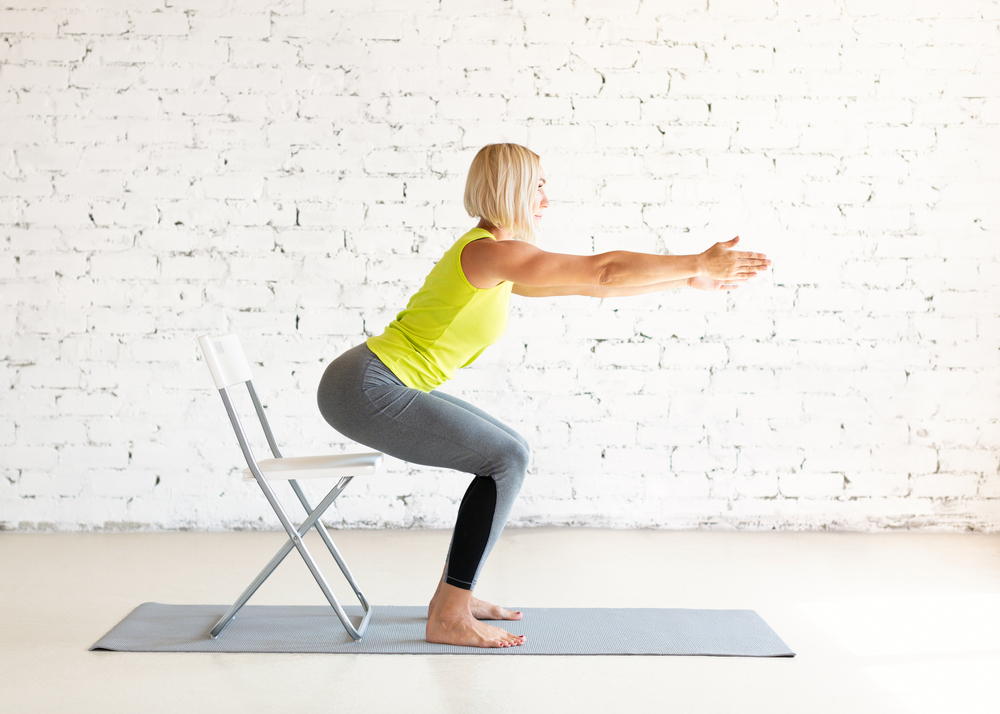
Practicing yoga on a chair makes it easier to attain certain poses. Just like Voelker’s first chair yoga student, it makes yoga more comfortable and less painful for those with mobility and joint issues.
Those who are recovering from surgery or rehabilitating from injuries may also practice chair yoga as part of their physical therapy routine.
Senior citizens are a popular target market for chair yoga because yoga on a chair is easier for them. Especially those with hip and walking problems, it’s easier to practice with a chair than to constantly struggle getting up and down from a yoga mat on the floor.
You can also creatively practice chair yoga on long bus or airplane rides. Yoga asanas which will not bother other passengers or create an obstacle that can cause safety concerns can be practiced to keep your body from getting too stiff and cold from hours of sitting in one position.
What Kind of Chair is Suitable for Chair Yoga?
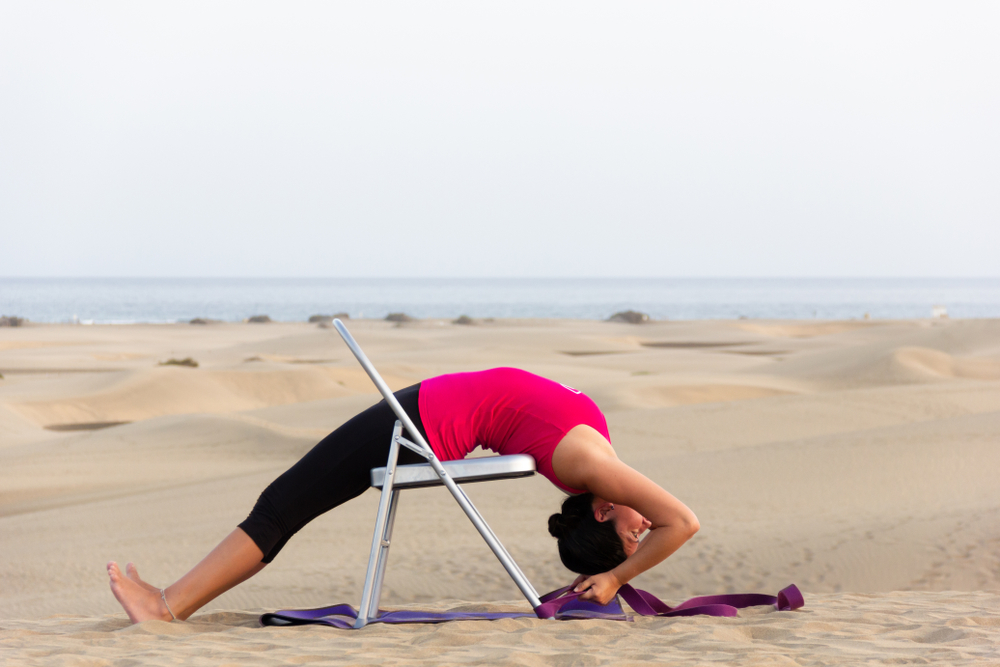
Most chair yoga classes will use a chair that has been standardized for this type of yoga.
The Iyengar yoga chair is a metallic folding chair with a padded seat. It has an open back and no arm rests. It is lightweight and portable yet sturdy and stable enough to support your body weight in various positions.
The specific design of this chair allows for many different kinds of asanas to be practiced on it.
Other teachers promote the use of easy-to-find plastic monobloc chairs for seated yoga. These chairs can be stacked easily and can be used both indoors and outdoors.
If you are travelling, your airplane or bus seat can also be used for chair yoga. Just be a mindful traveller and respect the space of other passengers and the rules enforced by the crew around you.
15 Chair Yoga Poses You Can Practice
Sukhasana on a Chair
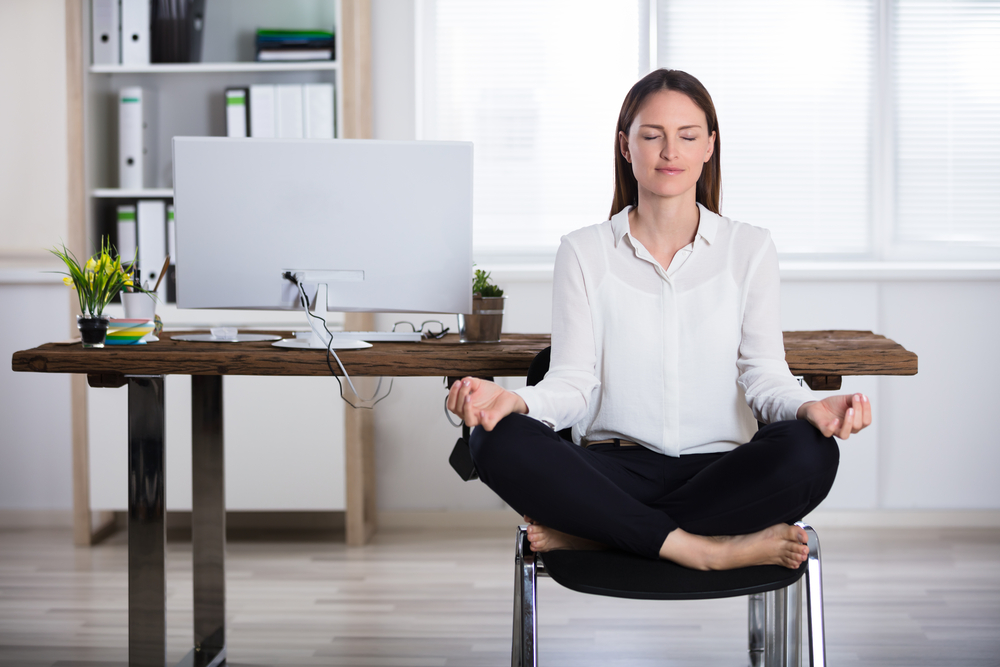
Easy Seated Pose asks you to sit comfortably with your spine tall and long, and chest expanded. WHen you practice this asana on a chair you can cross your legs as if you are on the floor if the chair does not have any arm rests.
You can also keep both feet flat on the ground. In both instances, ensure that your weight is evenly distributed on your sit bones and you’re neither slumped forward or leaning completely on the backrest.
Relax your arms and place your palms on your thighs facing up or down as you prefer.
Seated Twists
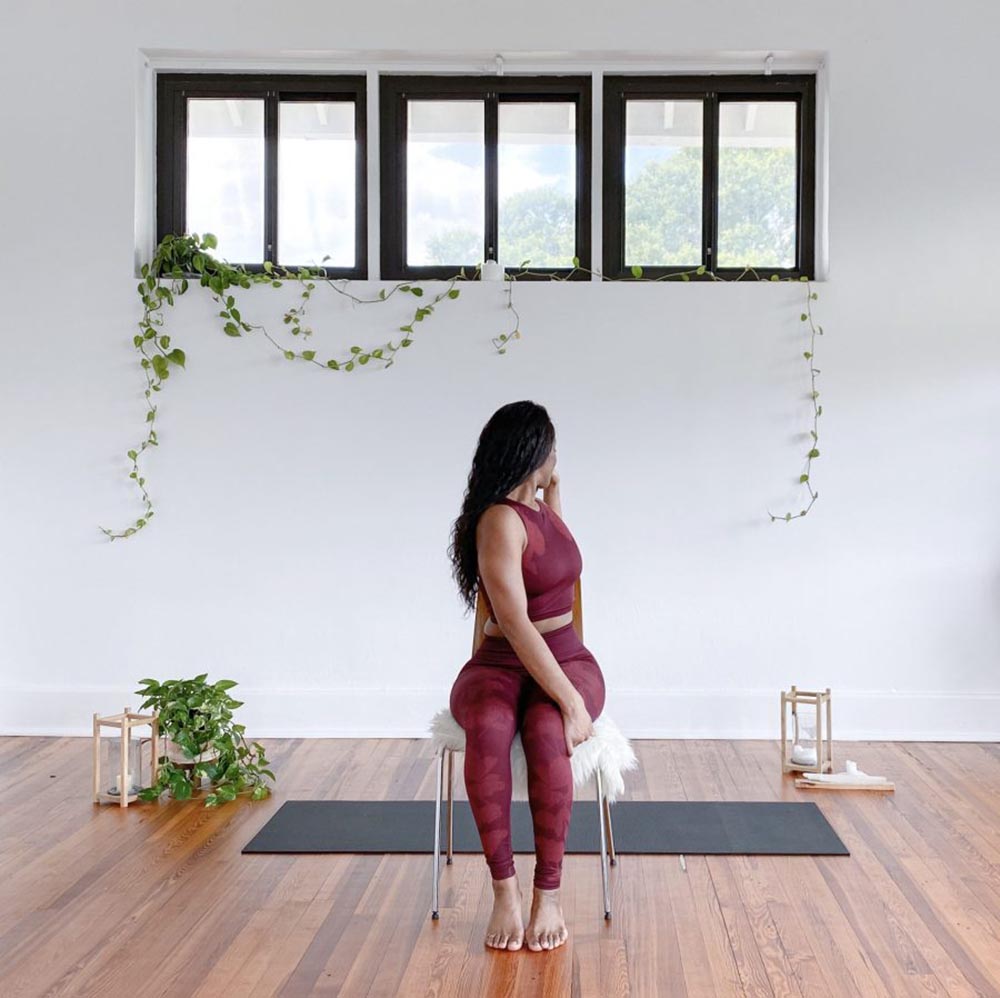
With your feet flat on the ground, rotate your upper body to face left. Place your hands on the outside of your left thigh or on the arm rest.
To deepen the twist, you may cross your right leg over your left leg.
Turn your head to look over your left shoulder.
Remain in this twist for a few deep, long breaths.
Release the twist and rest in Sukhasana for a few moments, then repeat the pose on the other side.
Seated Forward Fold
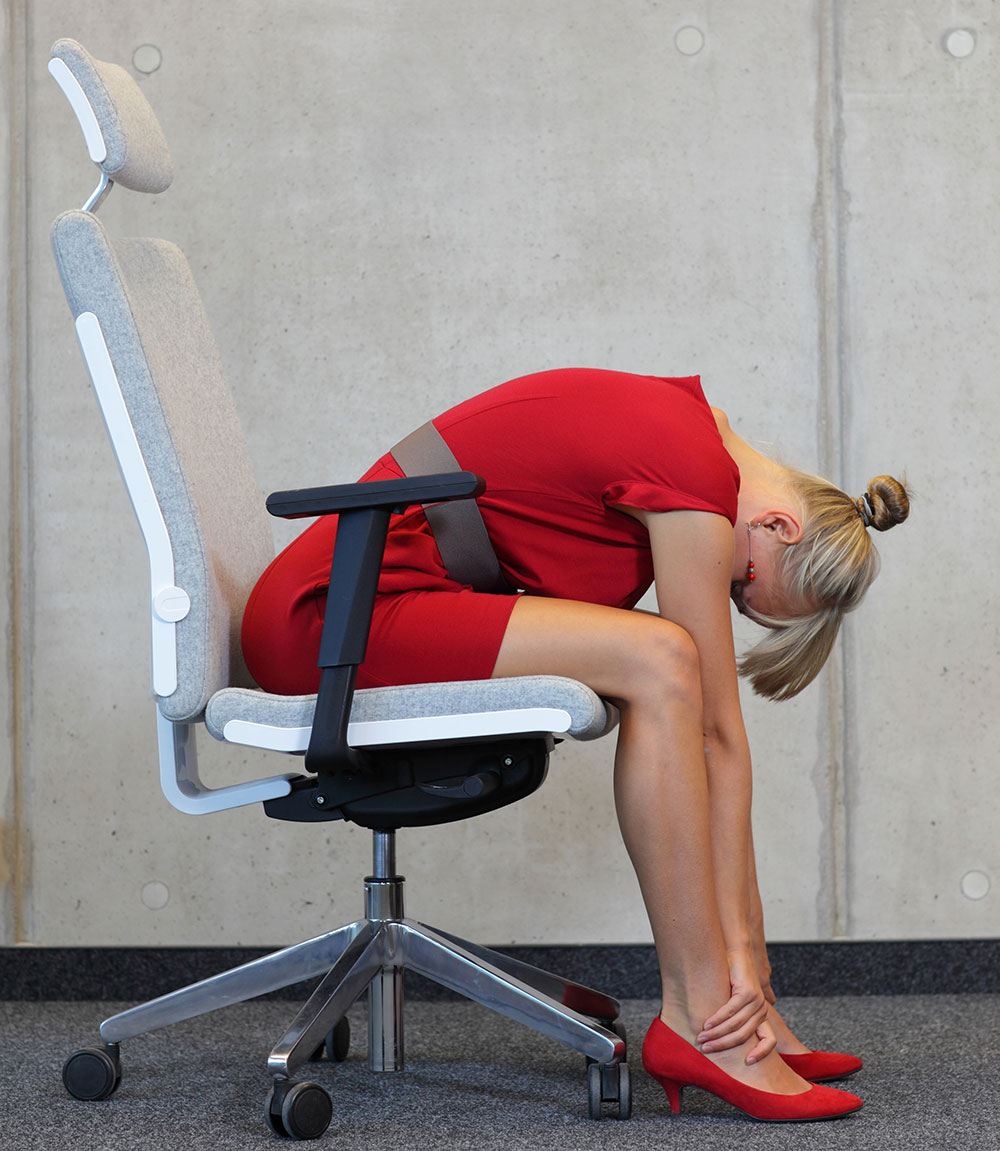
Maintain the length of your spine and you fold your body over your thighs. You may separate your feet and knees to give yourself more space to bend forward. You may also alternatively, place a pillow on your lap to rest on if you are unable to fold forward too deeply.
Relax your neck and allow your arms to hang by your legs so your hands or fingertips brush the ground.
Seated Side Stretches
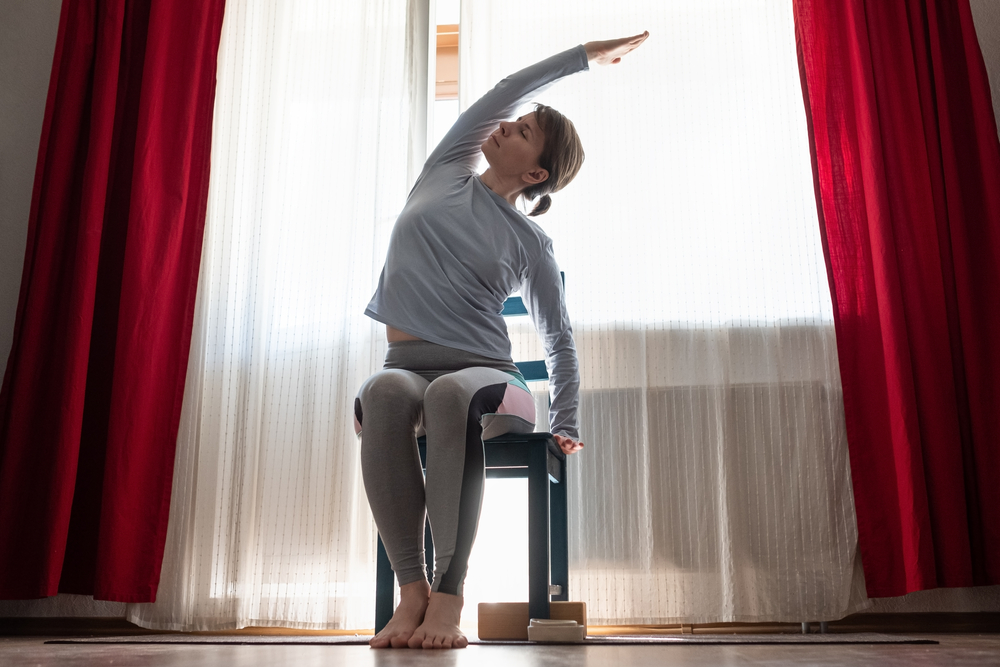
Sit upright in your chair with your feet flat on the floor. Start with a neutral and tall spine.
On an inhale, raise your left arm up over your head. You may also lift up both arms if you prefer. Reach for the sky. If you lift up both arms, interlace your fingers or keep your palms together.
Exhale and reach your left arm up and over towards the right. Keep your body on one plane — don’t lean forward or backwards.
Either relax your neck or look upwards beyond your fingertips or towards the sky.
Stay in this left side stretch for a few long, deep breaths. Alway lengthen you spine on each inhale and reach further to the right on each exhale.
Release the pose, rest in Sukhasana, and repeat to stretch the right side of your body.
Seated Pigeons
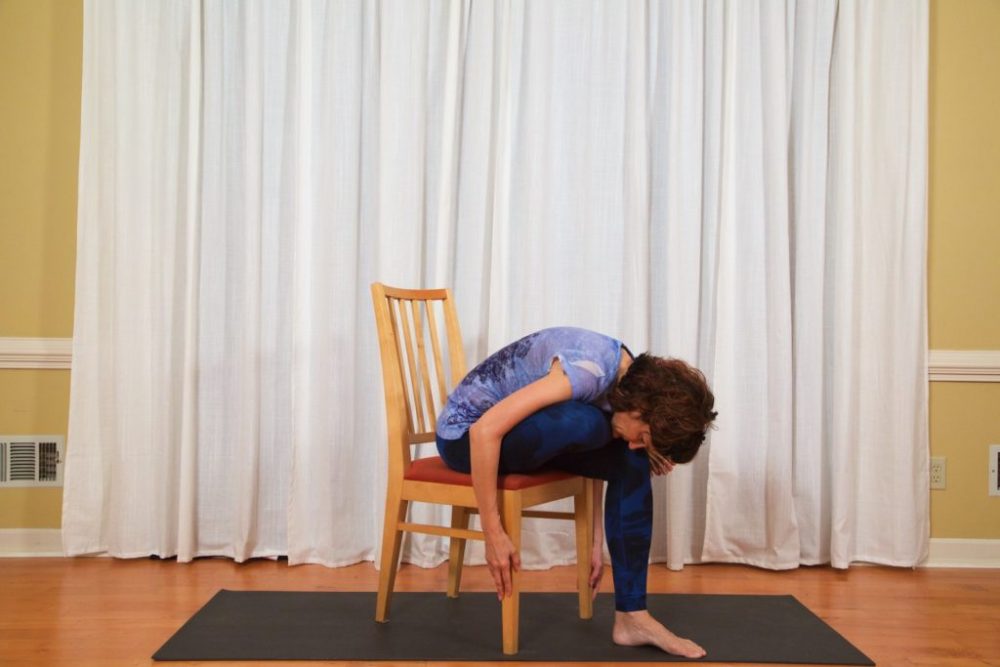
Ensure that both your sit bones are evenly placed on the chair for both sides of this Pigeon Pose variation. Start with both feet on the ground with your toes facing forward.
Flex your right foot and place your right ankle on your left thigh, close to your left knee. Keep your right knee and ankle on the same horizontal line.
Either sit with your spine tall and upright, or fold your torso over your bent leg.
Maintain the asana for a few breaths. Release and rest in Sukhasana or Seated Forward Fold. Repeat the pose on the opposite leg.
Extended Leg Stretches on a Chair
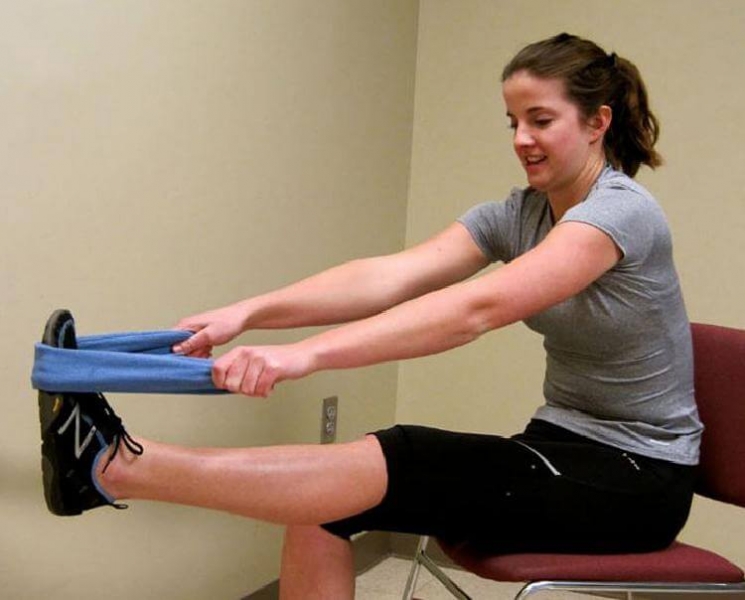
Begin with a neutral spine and both feet flat on the floor. Keep the toes of your feet facing forward.
Lift your left leg so that your hip, knee, and ankle are in one line parallel with the ground.
Flex your left foot.
Inhale to lengthen your spine and fold forward to reach your left foot with your left hand. Interlace your index and middle finger around your big toe.
You may also reach both hands towards your foot and interlace your fingers around the sole of your left foot.
A third alternative is to use a yoga strap to extend your reach by looping it around the foot of your extended leg.
Engage your core muscles to maintain a straight back and roll your shoulders back and down.
Stay in this pose for a few deep, long breaths then gently release your leg. Rest in Sukhasana or Seated Forward Fold. Repeat with your right leg extended.
Warrior 2 with a Chair
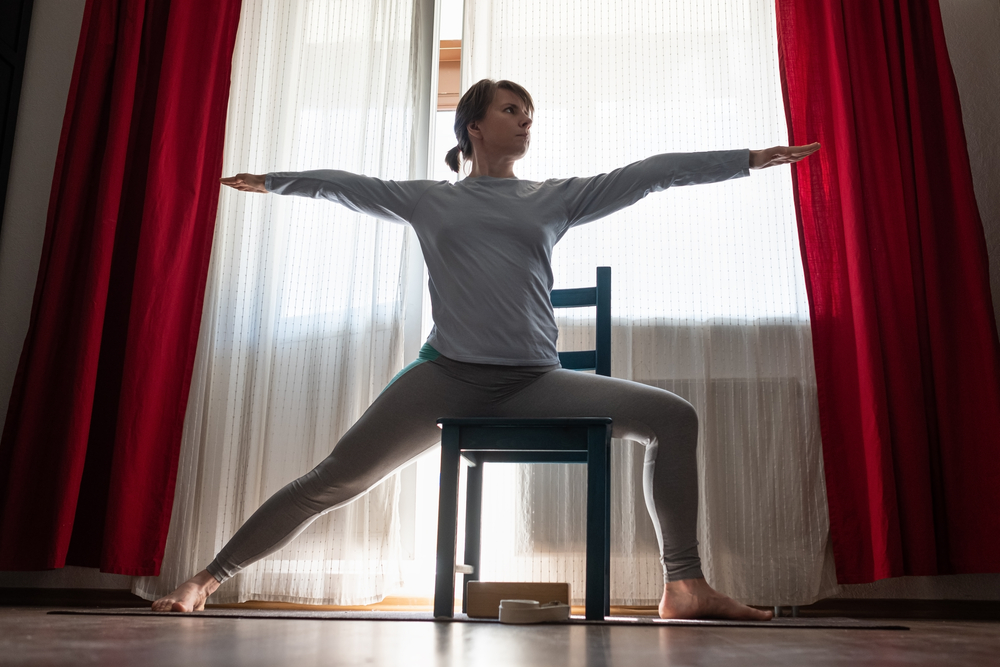
Chairs are not only for sitting on in yoga. You can use them as a support in either seated of standing variations of Warrior 2.
In the seated version, focus on keeping your spine tall and centered. Extend your arms in a horizontal line as you reach both forward and back.
Your legs won’t take much of your weight but still maintain them in good form. Keep your front knee bent at a 90-degree angle and don’t let your knee go forward beyond your toes. This will ensure good habits for when and if you practice the standing version of this asana.
To use the shair as a support for Warrior 2 or any standing posture, ensure that the chair is stable and does not slide on the ground when you put your weight on it in any direction. Allow yourself to lean on the chair as much as you have to for support to stand and hold yourself up in any yoga posture.
Think of the chair as an extension of your body rather than a crutch.
Backbends on a Chair
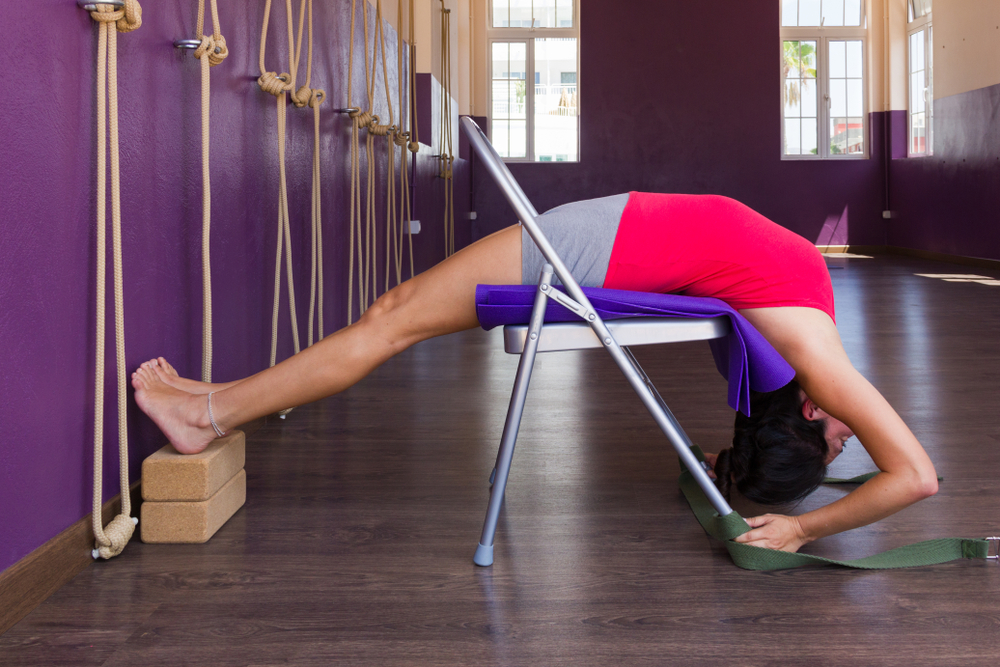
Backbends on a chair can potentially be dangerous to ensure that your chair is stable, will not slide, and will not fold in on itself when you lie on it. You may ask a yoga partner to keep an eye out especially as you go into the pose and as you get out of the backbend.
If your chair has an open back and your legs fit through it, sit facing the back of your chair.
If your chair has a closed back and no arm rests, sit sideways in the chair.
Shift your body and lie down so that your back is on the seat of the chair. Carefully lower your body to drape over the chair with your head towards the floor. Keep your feet flat on the floor with either extended legs or bent knees.
Relax or arms over your head or just let them hang by your sides.
Seated Meditation
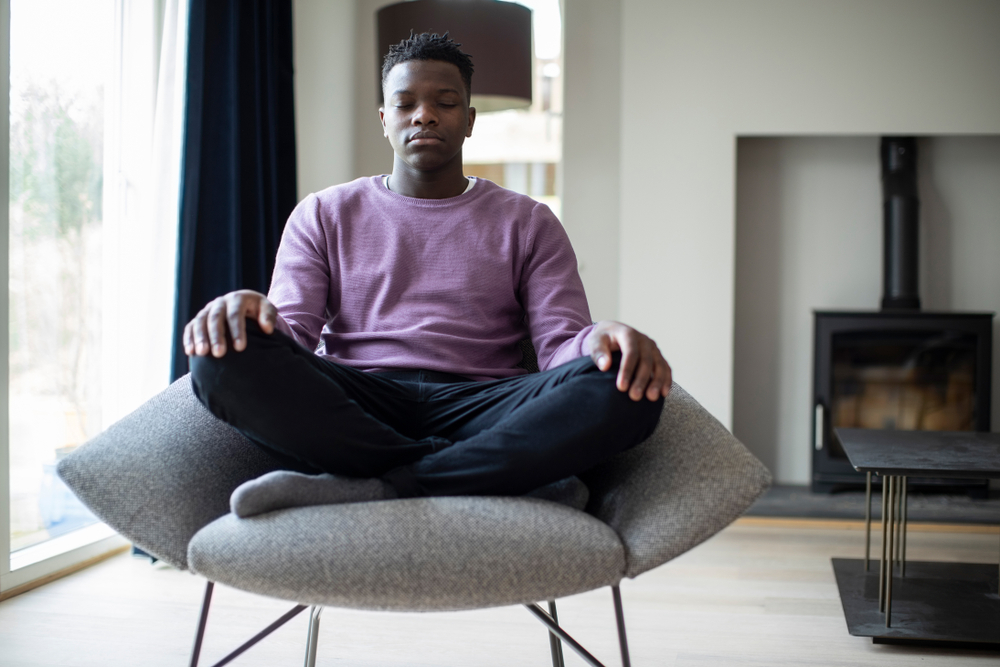
A chair is a comfortable place to practice meditation, especially if you are not used to sitting on the floor for a long time.
Sit on your chair with your spine tall and chest wide. Keep your legs uncrossed and feet flat on the ground. Or sit in either Sukhasana or Padmasana in your chair if it does not have any arm rests.
Rest your arms in your lap in any way that is comfortable for you. You may keep them in a mudra, interlace your fingers, place one hand over the other, or place them in your lap or thighs with your palms facing up or down.
Close your eyes and meditate with your prefered method.
Legs Up the Chair
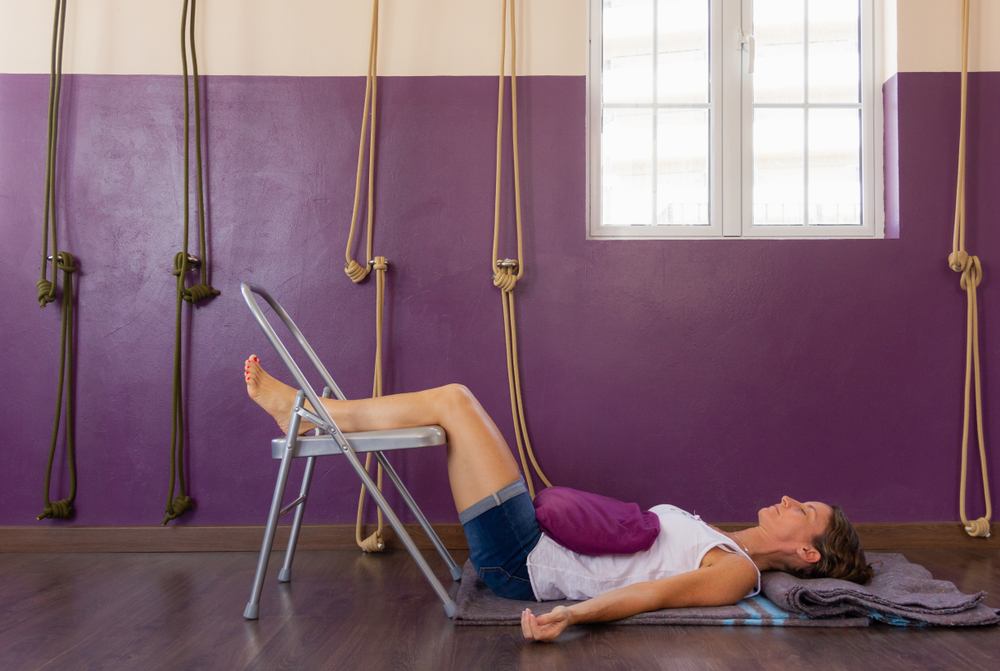
This Restorative Yoga Pose is adapted from Legs Up The Wall, known in Sanskrit as Viparita Karani Asana. Instead of placing both legs up a wall as you lie down, place them on your chair with your knees bent.
Many practice this asana right before or in place of Savasana as the final resting posture in Chair Yoga or any yoga class because of its many benefits.
Placing your legs above the level of your head helps to calm you down and relieve stress. It is also said to help rebalance your whole system because it promotes blood flow to the upper half of your body.
Conclusion
Chair yoga is a simple yet effective and rewarding yoga practice. It can help you practice all kinds of asana without worrying about your physical fitness level, shape, or mobily conditions. It can help bring you back to what yoga is about — being with yourself and accepting yourself as you are. The chair is a tool to help you attain that just like any asana, pranayama, or meditation practice.
What's Your Reaction?
Susan views the world through a lens of spirituality, health, and compassion. Her positive outlook on life shines through her writing, which is heavily focused on yogic living, meditation, and conscious eating.






